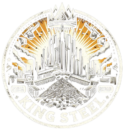Channel
Understanding Channel Iron: Composition, Uses, and Advantages
Channel iron, often recognized for its distinctive C-shaped cross section, represents a pivotal material in the construction and manufacturing sectors. This form of structural steel is fabricated to deliver a balanced amalgamation of strength, versatility, and economy, catering to a broad spectrum of applications ranging from building structures to heavy machinery and industrial supports. This article delves into the composition, benefits, and uses of channel iron, elucidating why it is a material of choice in numerous engineering and construction projects.
Composition and Manufacture
Channel iron is manufactured from structural steel or iron, containing carbon as the primary alloying element, along with small amounts of manganese, silicon, sulfur, and phosphorus. The production process involves rolling or extruding steel at high temperatures, shaping it into a U or C profile. This profile is characterized by two flanges connected by a web, the central area of the channel. The process aims to optimize the metal’s physical properties, such as its strength-to-weight ratio, making it suitable for supporting structures under stress while minimizing material weight.
Mechanical Properties
The mechanical properties of channel iron make it an indispensable material in construction and manufacturing. Its design offers superior weight distribution across its cross section, enhancing its ability to withstand bending forces. The material’s strength is meticulously calibrated through the addition of alloying elements and the application of heat treatments. This ensures that channel iron can support significant loads without succumbing to deformation, a critical factor in its widespread application in structural frameworks.
Advantages of Channel Iron
Durability: Channel iron is known for its exceptional durability and resistance to environmental factors such as corrosion and extreme temperatures. This makes it an ideal choice for outdoor structures and applications where longevity and low maintenance are paramount.
Versatility: The C-shaped profile of channel iron offers architects and engineers flexibility in design and application. It can be used in a plethora of ways, from the main framework of buildings to supports for heavy machinery.
Cost-Effectiveness: When compared to other structural materials, channel iron provides a cost-effective solution without compromising on strength or durability. Its ease of fabrication and installation further contributes to reducing overall project costs.
Recyclability: Channel iron is 100% recyclable, making it an environmentally friendly option. Its ability to be reused without degradation of its properties aligns with sustainable building practices and green construction initiatives.
Applications of Channel Iron
Channel iron’s unique properties and advantages make it suitable for a wide range of applications:
Construction: It is extensively used in the construction of buildings, bridges, and other structures, serving as beams, rafters, and frames that provide necessary support and stability.
Industrial Machinery: Channel iron provides structural support for heavy machinery and equipment, ensuring alignment and resistance to stress and vibration.
Automotive and Rail: In the automotive and rail industries, channel iron is used to manufacture chassis and framework components that require high strength and durability.
Marine: Its resistance to corrosion makes it ideal for marine applications, including shipbuilding and harbor structures.
Furniture and Decor: Beyond industrial uses, channel iron finds applications in designing modern, industrial-themed furniture and architectural details, where its structural integrity adds both aesthetic and functional value.
Future Outlook
The future of channel iron in construction and manufacturing looks promising, driven by continuous improvements in steel-making technologies and an increasing emphasis on sustainable materials. Innovations in alloy compositions and manufacturing processes are expected to enhance the performance and environmental footprint of channel iron, broadening its applications and appeal.
In conclusion, channel iron’s blend of strength, versatility, and cost-effectiveness makes it a cornerstone material in the construction and manufacturing industries. Its applications span from critical structural components to aesthetic architectural elements, underscoring its significance in modern engineering and design projects. As the demand for more sustainable and efficient materials continues to rise, channel iron will undoubtedly remain a material of choice for architects, engineers, and designers around the world.
